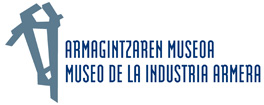
A. Aguirre y Aranzabal – AYA (Portalea Kultur Etxea – Armagintza Museoa)
ARCHITECT: Raimundo Alberdi Abaunz - 1936
In 1915, Miguel Aguirre and Nicolás Aranzabal, two entrepreneurs from Eibar who had learned their trade in Barcelona under the supervision of the German arms maker E. Schilling, founded the arms company Aguirre y Aranzabal. Initially it was located near the Carmelitas convent, far from the town centre, when it was no more than a small workshop employing eight workers, one of so many in the town of Eibar. It started out by supplying parts to other gun makers, fundamentally Víctor Sarasqueta, which was at that time one of the most important companies in Eibar. Little by little, the business became more and more profitable, and some years later the workshop was relocated in the town centre, in the street named Dos de Mayo (today Toribio Etxeberria), where there were already several similar arms producers. There it went on to become one of the busiest workshops in Eibar.
During the First World War they capitalised on Spanish neutrality and used the opportunity to raise production to over 20,000 parts. The factory was later destroyed, as was most of the industrial fabric of the town, during the Civil War.
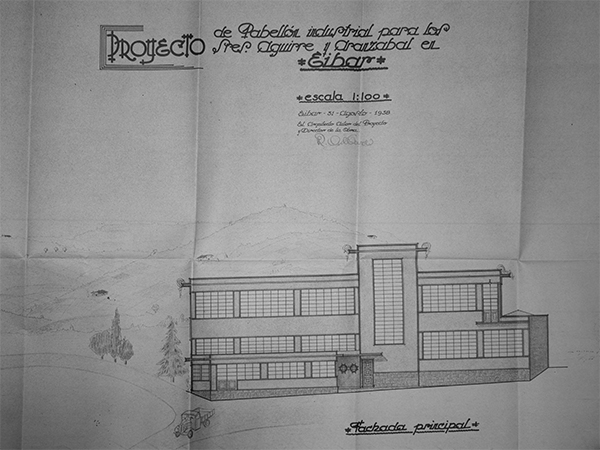
In 1938 the owners decided to move to a new location in the area known as Bista Eder. This decision coincided with an important change in the strategy of the company, as they stopped producing components for other companies and began to produce finished firearms which were then distributed under the AYA brand name.
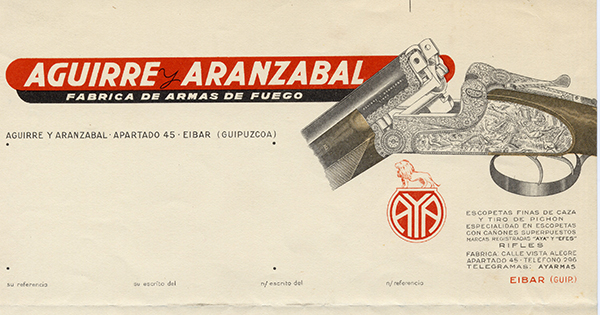
The production process for a finished shotgun required more complex installations than the company had possessed in Dos de Mayo, and therefore the decision was taken to order the construction of a new building. The architect Raimundo Alberdi Abaunz, undoubtedly one of the most prolific in the history of the reconstruction of Eibar in the post-war period, was entrusted with the task.
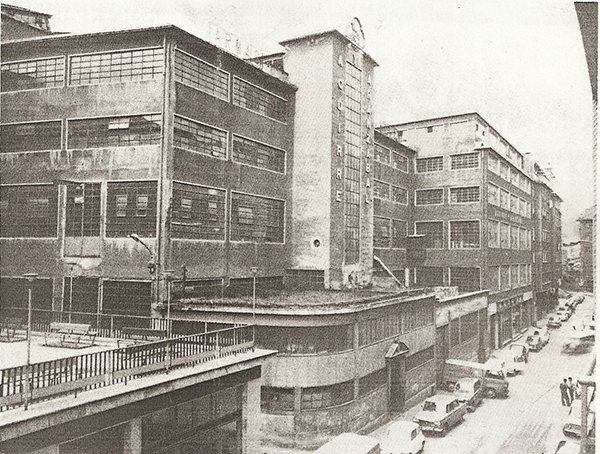
Costing 100,000 pesetas, the whole structure of the new building was made of reinforced concrete, so it was strong, fireproof and versatile, allowing for later extensions and easy installation of heavy machinery. Inspiration for the design of the building was sought among French and Belgian arms factories, and the project included several important advances, such as a firing range and specially reinforced areas for weapon testing. When inaugurated, the new factory was admired by all; the power of its architecture and the magnificence of its installations received favourable reviews in the press and specialized journals.

Today, the company continues to function in other premises. The building in Bista Eder was acquired by the Local Authority and, following extensive renovation work, was turned into a cultural centre. The rooms of "Portalea", as it is now known, have abandoned the production of shotguns in favour of cultural services: exhibition galleries, conference rooms, meeting rooms, workshops and " of course " the Arms Industry Museum, which displays an extensive collection of arms as well as a wide variety of goods manufactured in Eibar. Those interested may visit an exhibition area of over 1,000 m2, which takes up the whole of the fifth floor of the building, and discover the memory and heritage of Eibar, a town with a proud industrial tradition, in a display that dates from the 14th century up to the present day.
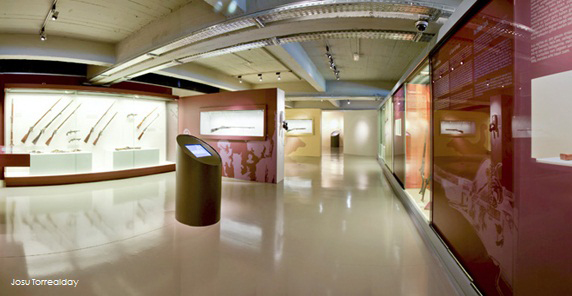
 Anemona Studioa, 2015, Eibar www.anemonastudioa.com
Anemona Studioa, 2015, Eibar www.anemonastudioa.com Ondartez www.ondartez.com
Ondartez www.ondartez.com
